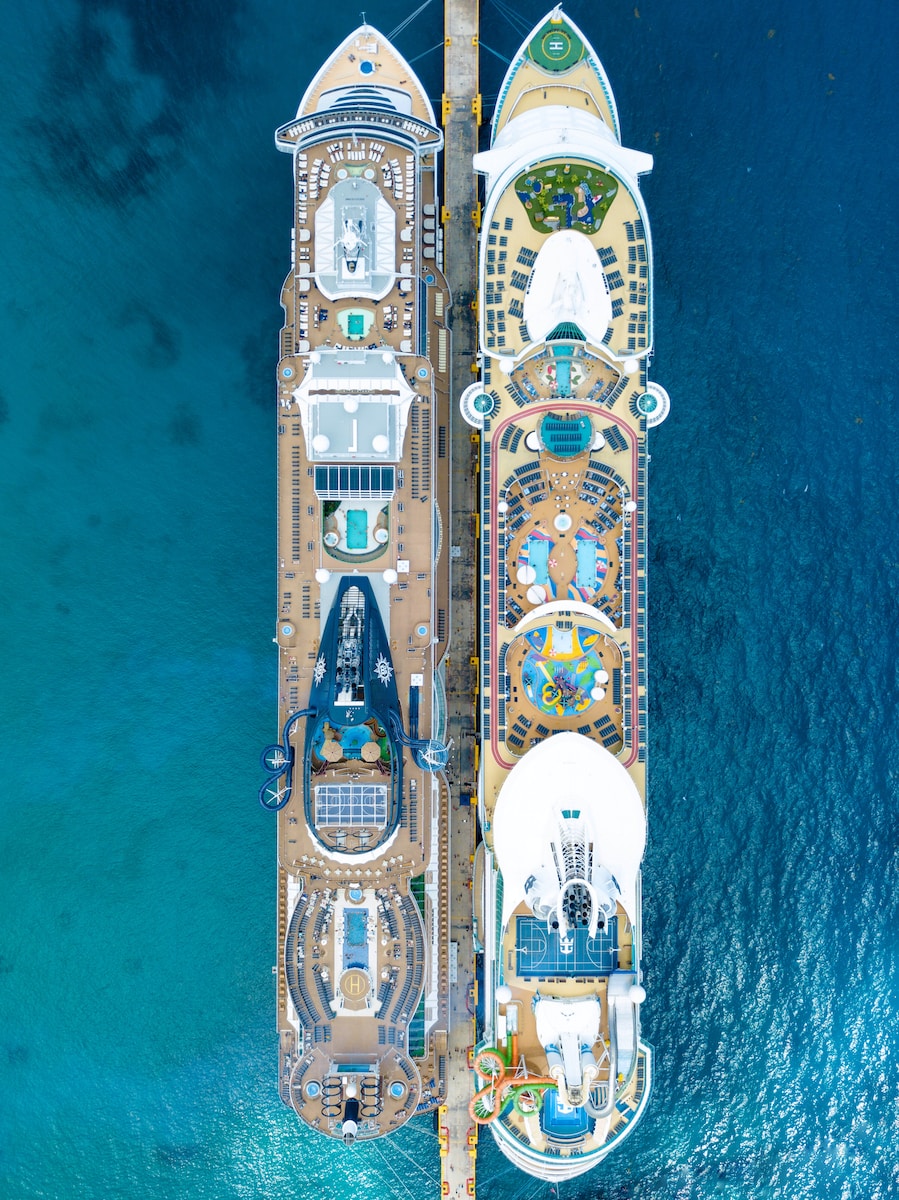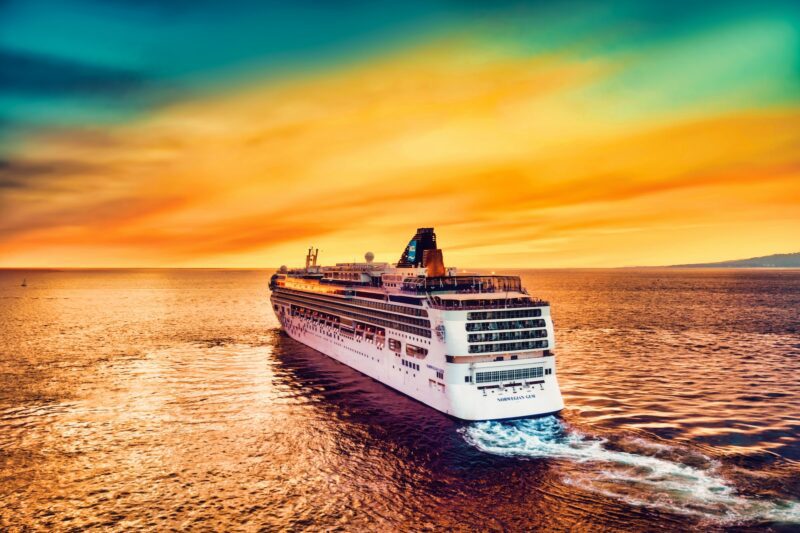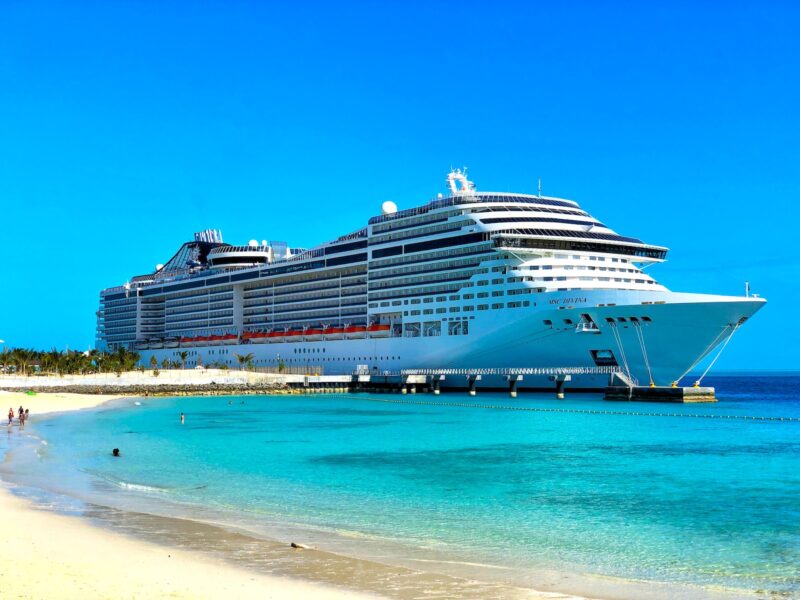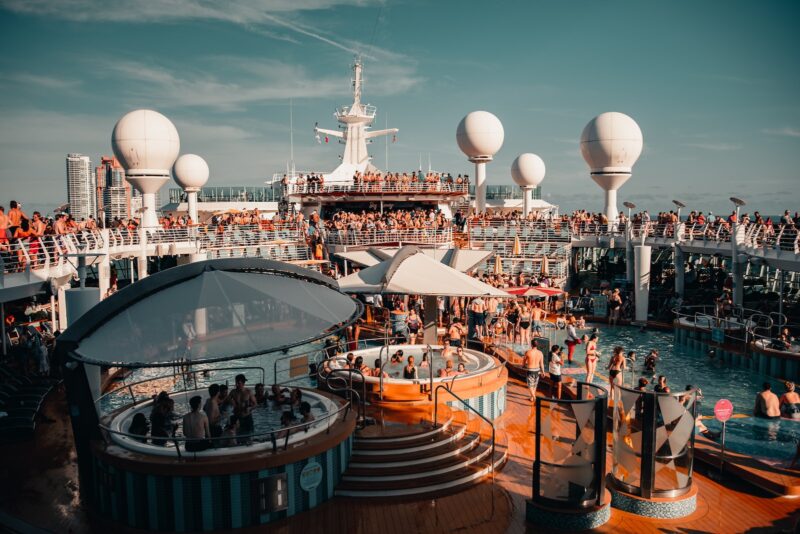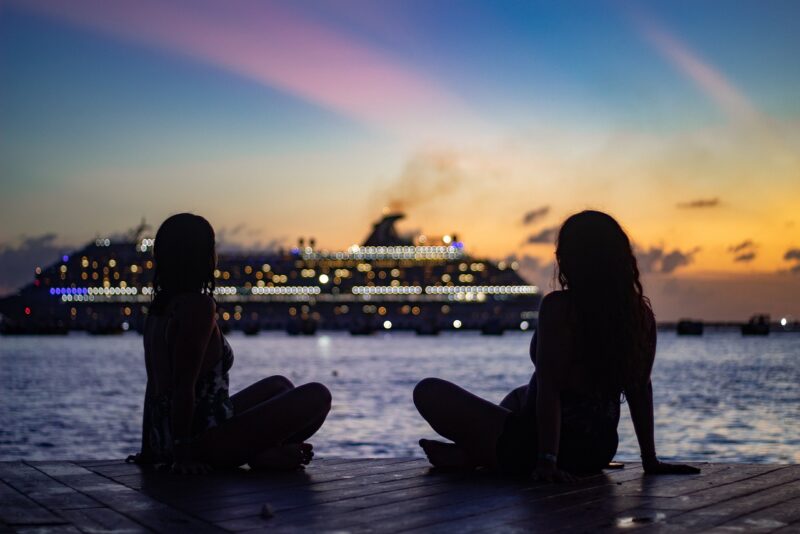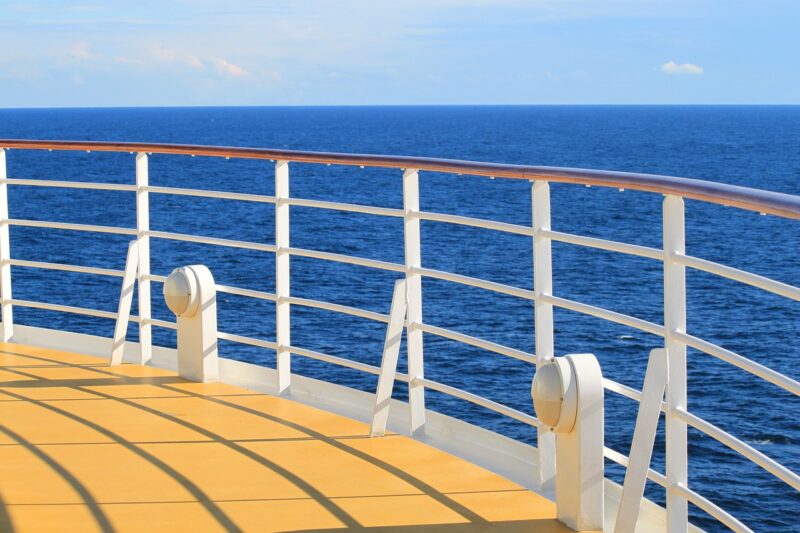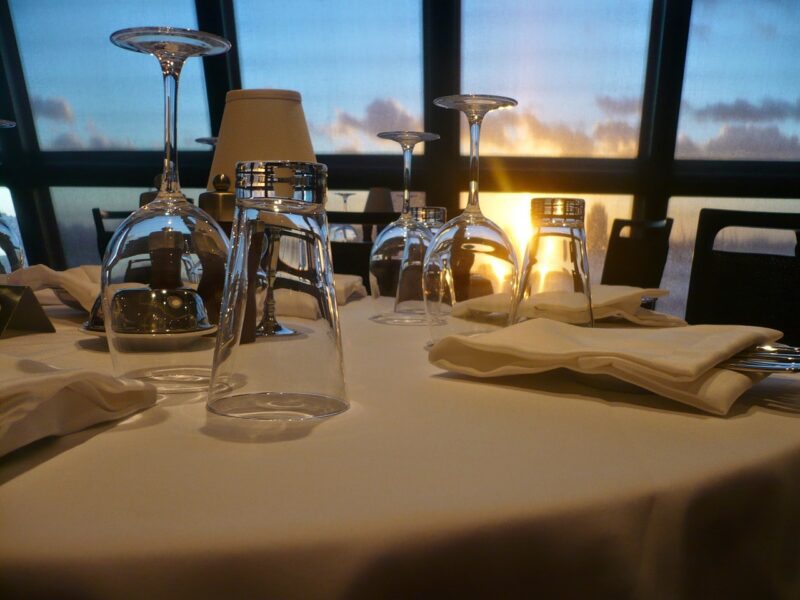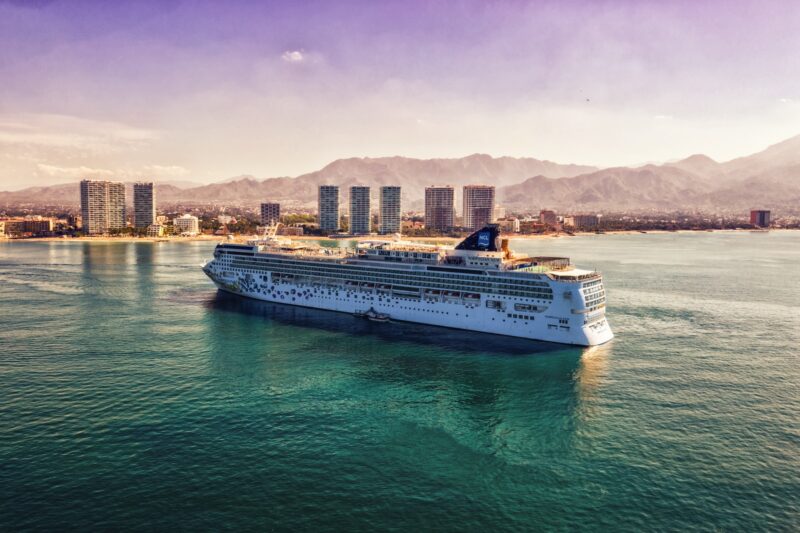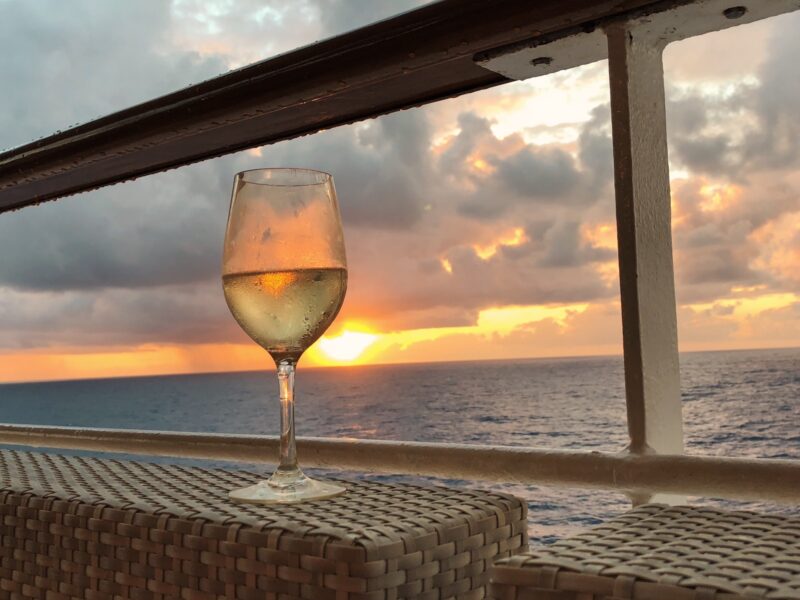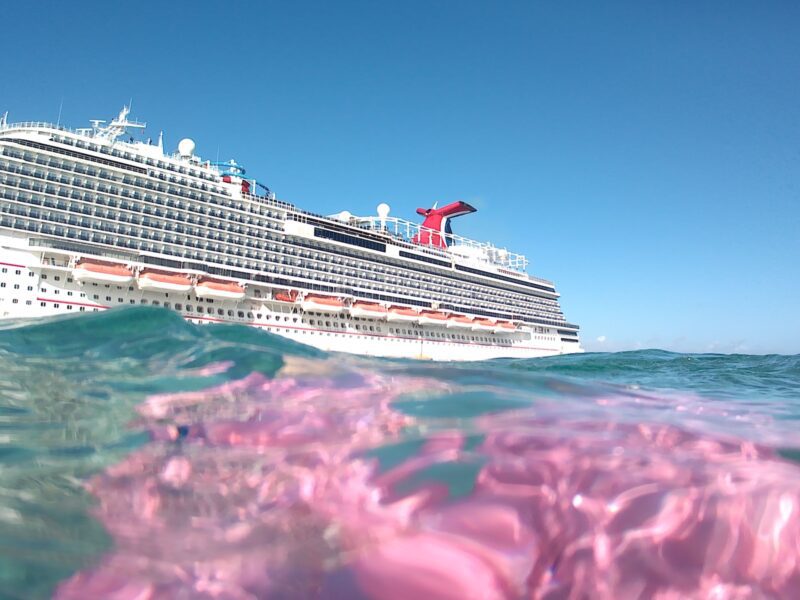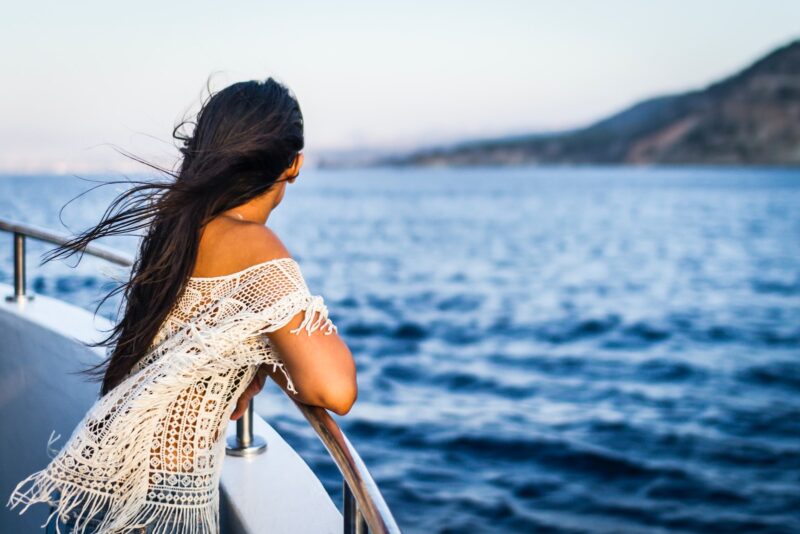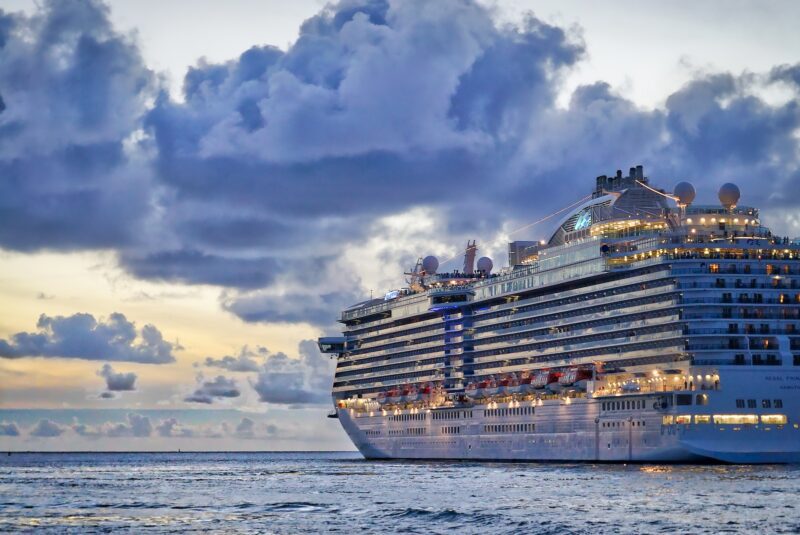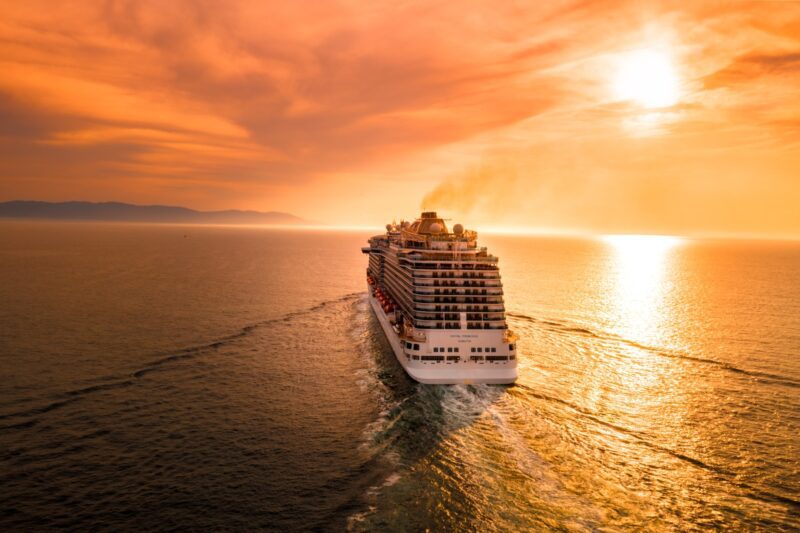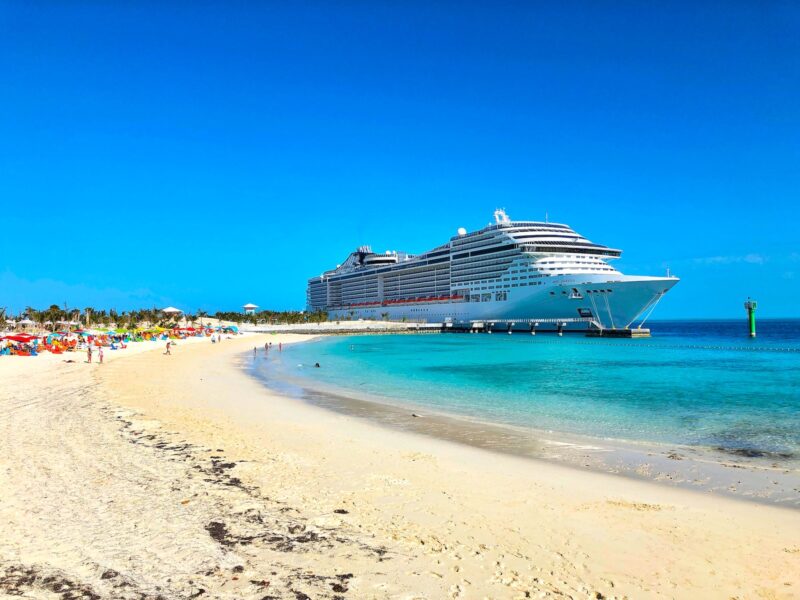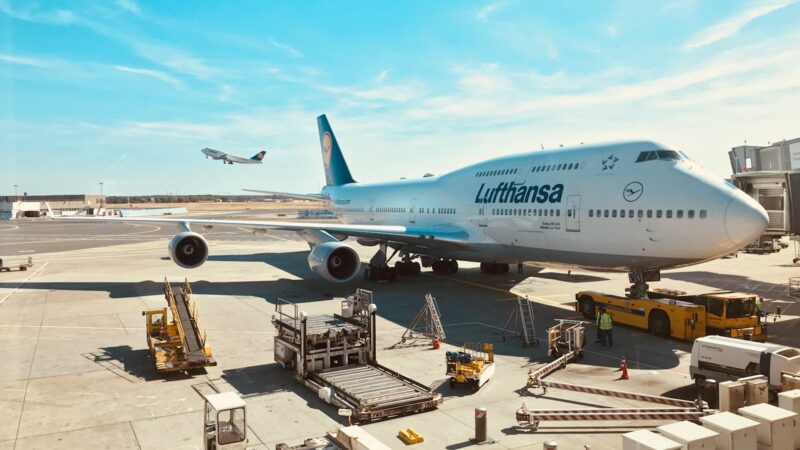Embarking on a cruise vacation can be a delightful and memorable experience. Having been a popular choice among travelers for nearly 30 years, cruising offers a unique way to explore the world. While it may not cater to everyone’s taste, the majority of first-time cruisers find themselves drawn to the charm and returning for more adventures. The alluring combination of leisure, adventure, and romance makes cruising an exceptional vacation option for many.
However, before you set sails and dive into your first cruise experience, an important decision needs to be made – which cruise line should you choose? With numerous cruise lines available that cater to diverse preferences, it can be a daunting task to narrow down your options. Factors such as ship size, travel destinations, family-friendliness, and pricing come into play when comparing different cruise lines. Your journey towards delightful experiences across the vast expanses of oceans begins with finding the perfect cruise line that resonates with your desires and preferences. Armed with the right knowledge and a clear understanding of your expectations, you’ll be ready to embark on an unforgettable cruising adventure.
You might like this post on how to pick the perfect cabin location on a cruise
Table of Contents
ToggleAn Overview of Cruise Lines
Cruise lines come in a vast variety of sizes and styles, catering to every traveler’s taste and preference. The cruise industry comprises everything from enormous ships operated by companies like Royal Caribbean and Norwegian Cruise Line, often featured in television advertisements, to smaller, intimate vessels that feel more like boutique hotels.
Cruise ships can vary from carrying thousands of passengers to merely a few dozen, each offering a distinct atmosphere and experience. For instance, the highly sought-after expedition cruise lines focus on adventure voyages to remote places like Antarctica, employing rugged vessels specifically designed for exploration. Moreover, some cruise lines specialize in river travel, while others operate authentic sailing ships.
Categorizing cruise lines can be quite tricky; the industry often uses labels such as “contemporary” and “premium” to differentiate its offerings. However, it is best to focus on what’s important to you as a traveler, rather than getting caught up in marketing jargon.
Here are six main categories to consider when choosing the perfect cruise line for your vacation:
- Large-scale vessels: Operated by well-known brands like Royal Caribbean, these cruise ships host thousands of passengers and offer an abundance of entertainment options.
- Small-scale vessels: These intimate ships cater to a few dozen to a few hundred passengers, providing a boutique hotel-like ambiance.
- Expedition cruises: For those who yearn for adventure, these cruises involve voyages to remote destinations, like Antarctica, aboard durable vessels built for exploration.
- River cruises: These cruise lines specialize in navigating the world’s rivers, offering passengers a unique way to explore picturesque landscapes and historic cities.
- Sailing ships: Authentic sailing ships provide a classic sailing experience, combining luxury with tradition.
- Family-focused cruises: Cruise lines offering programs and amenities that cater specifically to families, ensuring all ages have an enjoyable time on board.
When choosing the right cruise line for your vacation, consider the factors that matter most to you, such as the size of the ship, desired destinations, the level of luxury, and the type of travel experience you seek. The world of cruises is vast and diverse; you just need to find the one that suits your preferences and make your dream vacation a reality.
The Big Players
Mega Resort-Style Cruise Lines
If you’re a fan of large, bustling megaresorts, consider Royal Caribbean, Norwegian Cruise Line, and MSC Cruises. These three brands operate enormous ships that boast an impressive variety of amenities, such as water parks, surfing pools, go-kart tracks, laser tag courses, numerous restaurants, bars, entertainment venues, spas, casinos, and more. These cruise lines appeal to a wide demographic, including families and individuals with various budgets.
Traditional Cruise Lines
For those who prefer a more serene and traditional cruise experience, Princess Cruises, Holland America, and Celebrity Cruises are excellent options. These cruise lines operate medium to large ships, but their focus is on offering tranquil pool and lounge areas, fine dining, and classic entertainment rather than bustling attractions. Catering more to couples and older passengers, these brands provide a more sophisticated and relaxed atmosphere.
Budget-Friendly Option
Carnival Cruise Line is known for its value-for-money deals, casual atmosphere, and fun-focused activities. While Carnival ships also offer amusing facilities like water parks, “sky rides,” and roller coasters at sea, they generally don’t have vessels as massive or packed with venues as Royal Caribbean, Norwegian, and MSC Cruises. Carnival mainly appeals to budget-conscious travelers and offers a lively, unpretentious experience.
Luxury Cruise Lines
For those who crave upscale experiences, luxury cruise lines provide an unparalleled vacation with top-tier amenities, excellent service, and intimate environments. North American travelers seeking the finest cruise experience have many options to choose from, such as Regent Seven Seas Cruises, Silversea Cruises, Seabourn, Hapag-Lloyd Cruises, Ritz-Carlton Yacht Collection, Explora Journeys, and Crystal.
Luxury cruise lines set themselves apart by offering spacious cabins, often in the form of suites, delightful dining experiences, and high-quality service to ensure a relaxing journey. These ships typically provide passengers with more space and a higher crew-to-passenger ratio, ensuring a personalized and luxurious experience.
Seabourn, for example, has intimate, upscale vessels with around 226 rooms, providing a quiet, relaxing atmosphere for passengers. Luxury cruise lines offer various ship sizes and styles; some are grand and elegant, while others focus on a smaller, more intimate experience. The largest vessels in Regent’s fleet carry around 700 to 750 passengers in their opulent and sophisticated surroundings.
One aspect of luxury cruising that is consistent across the board is the cost. Luxury cruises can be significantly more expensive than their mass-market counterparts, with prices per person per day sometimes surpassing $1,000. However, this higher price includes most additional fees—from drinks, gratuities, and Wi-Fi to flights to the ship—which leads to a more all-inclusive and seamless experience.
Aboard luxury cruise ships like Regent Seven Seas Cruises’ Seven Seas Splendor, passengers can expect elegant suites that compete with the finest land-based luxury hotels. For example, Hapag-Lloyd Cruises, a German line, operates some of the world’s most exquisite, spacious, and service-focused cruise vessels, increasingly appealing to English-speaking travelers through bilingual sailings.
The luxury cruise market is set to expand even more in the coming years, with companies like Four Seasons and Aman Resorts planning to launch their own fleets of small luxury cruise ships. The forthcoming additions to the luxury cruise lines will continue to cater to high-end travelers who appreciate top-notch service and accommodations in an intimate and lavish setting.
Upscale-but-not-quite-luxury lines
Several cruise lines provide a high-end experience that isn’t exactly luxury but still offers a refined ambiance. These cruise lines include Oceania Cruises, Viking, Azamara, Windstar Cruises, and SeaDream Yacht Club.
These lines generally operate smaller and more intimate ships compared to mass-market lines. For instance, Oceania vessels carry 700 to 1,250 passengers, while Viking ships accommodate 930 passengers. Windstar’s ships are even smaller, hosting 148 to 342 passengers, and SeaDream’s yacht-like vessels can cater to only 112 passengers each.
With high staff-to-passenger ratios, these lines offer more personalized service than mass-market lines. They typically provide more space per passenger and larger cabins, although not as large or opulent as those found on luxury lines. The pricing for these lines is also generally more reasonable than luxury lines; however, some amenities such as gratuities and certain drinks may require additional fees.
It’s important to note that dividing cruise lines into “luxury” and “upscale but not quite luxury” is not a clear-cut process. Viking, for example, offers outstanding onboard service, high-quality dining options, and several inclusions in its base fares, including shore excursions in every port – bordering the line between the two categories.
Viking’s entire ocean ship fleet is relatively new, as all of its vessels were built within the last seven years. This is quite unusual for this group of upscale lines, as many of their fleets consist of ships that had been built at least twenty years ago. Azamara, Windstar, and SeaDream’s fleets, for example, are made up of older vessels that were once state-of-the-art luxury ships but may not offer as many amenities as newer luxury vessels.
The onboard dining experience on these ships is elegant and diverse. Oceania Cruises, for instance, offers a range of refined restaurants, including the Asian eatery Red Ginger. However, some aspects of these older vessels might seem outdated compared to today’s luxury ships, such as smaller cabins and the absence of balconies on Windstar and SeaDream ships. The four oldest ships of Oceania and Azamara have smaller cabins compared to modern luxury ships.
As an interesting tidbit, the four Azamara ships and the four oldest Oceania ships are sister vessels, which formerly belonged to the now-defunct Renaissance Cruises. Cruise enthusiasts may recognize them by their Renaissance-related class name, the R class.
Expedition Lines
Expedition cruising has rapidly gained popularity as a unique form of travel that takes passengers to remote and hard-to-reach destinations on small, sturdy vessels. These ships are equipped with landing crafts to transport travelers ashore, facilitating authentic experiences in off-the-beaten-path locations often inaccessible through land-based infrastructure.
On expedition cruises, passengers venture into remote wilderness areas and interact with native wildlife. These journeys are accompanied by expert guides, scientific specialists such as biologists, geologists, and ornithologists, and a historian to provide insights during landings and informative conversations.
Some of the most sought-after expedition cruise destinations are Antarctica, the Arctic regions like Svalbard, Franz Josef Land, and Canada’s Northwest Passage, as well as the wildlife-rich Galapagos. Moreover, expedition cruise ships operate in remote areas of South America, Asia, and the South Pacific, and even in more mainstream locations like Alaska.
Renowned expedition cruise lines include:
- Aurora Expeditions
- Atlas Ocean Voyages
- Lindblad Expeditions
- Hurtigruten
- Hapag-Lloyd Cruises
- Ponant
- Quark Expeditions
- Scenic Luxury Cruises
- Seabourn
- Silversea Cruises
- Oceanwide Expeditions
- Poseidon Expeditions
- Viking
Silversea Cruises, Hapag-Lloyd Cruises, Seabourn, and Viking are notable players in both the traditional luxury ship market and expedition cruising. Recently, an increasing trend has been observed with traditional cruise lines entering the expedition cruise space. Furthermore, Scenic Luxury Cruises & Tours has launched its first two expedition ships, and Atlas Ocean Voyages, an all-new luxury expedition cruise company, has emerged as a “luxe-adventure” line.
UnCruise Adventures is another unique line specializing in adventurous, outdoorsy trips in remote regions of Alaska. This line operates small vessels, with the largest accommodating a maximum of 86 passengers. UnCruise Adventures emphasizes activities like hiking, kayaking, whale watching, birding, and exploring by skiff.
Traditionally, expedition ships carried fewer than 200 passengers to keep the exploration-focused voyages manageable in remote locations. However, newer ships, such as Viking’s expedition vessels or Hurtigruten’s recent ships, are designed to accommodate more passengers. It is essential to note that expedition cruises are generally expensive, with pricing comparable to traditional luxury cruises. The cost of building and maintaining expedition ships, along with the high staff-to-passenger ratio, contribute to the overall price.
River Cruise Lines
River cruising has become a rapidly expanding sector in the cruise industry, mainly due to the efforts of Viking, which has developed an impressive fleet of more than 60 river ships since its inception in 1997. In recent years, many other river cruise lines have entered the market, providing travelers with a wide range of experiences and destinations to choose from.
Typical river cruise destinations include various regions across Europe, such as the Danube and Rhine rivers, as well as river cruises in the Caribbean, Asia, the South Pacific, and even within the United States. Whether exploring the cultural treasures of historic European ports or immersing in the exotic landscapes of distant destinations, river cruises offer a unique and intimate way to experience these regions.
When choosing a river cruise line, travelers will find a variety of quality and price points to fit their preferred style. Some major cruise lines offering river cruises marketed toward North American passengers include:
- AmaWaterways
- Avalon Waterways
- Uniworld Boutique River Cruises
- Tauck
- Emerald Waterways
- Scenic Luxury Cruises & Tours
- American Cruise Lines
- American Queen Voyages
- Grand Circle Cruise Line
Besides these cruise lines, there are additional river cruise companies that primarily cater to European passengers, such as France-based CroisiEurope or Germany’s Nicko Cruises.
Most river cruise vessels are similar in size due to constraints imposed by lock sizes and bridge heights on navigable rivers. However, differences in luxury and price points are evident when examining the interiors and capacity of each river cruise line’s vessels. For example, Viking designs its standard 135-meter ships to accommodate 190 passengers, while Avalon Waterways and AmaWaterways accommodate 166 and 156 passengers, respectively. Tauck, on the other hand, offers a more premium experience by carrying only 130 passengers on their 135-meter ships.
When considering a river cruise, travelers should pay attention to the variety of available itineraries, corresponding shore excursions, and the overall ambiance of the cruise line. Some river cruise lines, such as Viking, are more affordable and may offer more comprehensive itineraries, while lines like Tauck cater to those seeking a higher-end experience at a steeper price. Ultimately, finding the ideal river cruise line depends on individual preferences, interests, and budget.
Niche Lines
In the vast world of cruising, there exists a collection of smaller, specialized cruise lines that offer unique experiences. These niche lines often operate with a limited number of ships, catering to specific geographical areas or particular interests.
One such line is Disney Cruise Line, perfect for Disney enthusiasts and families, with their immersive, magical offerings. Virgin Voyages creates an adults-only atmosphere where passengers can let loose without the presence of children.
For those looking to explore specific regions, there’s Paul Gauguin Cruises with its specialized South Pacific sailings, Alaskan Dream Cruises for incredible Alaska voyages, and Celestyal Cruises for immersive trips around Greece and Turkey.
Sailing aficionados are sure to enjoy lines like Star Clippers and Sea Cloud Cruises, which feature traditional sailing vessels and journeys reminiscent of times past. Ocean liner enthusiasts, Anglophiles, and globetrotters can experience the elegance of Cunard Line with its iconic transatlantic sailings and around-the-world trips.
For a closer-to-home experience, explore American Cruise Lines and American Queen Voyages for voyages along U.S. waterways and the coasts of Mexico. Additional small-ship cruises are available through Grand Circle Cruise Line, taking passengers on intriguing, niche itineraries.
Though these niche players may be significantly smaller than major cruise lines like Royal Caribbean, they have carved out a distinct identity and reputation within the cruising industry. For instance, the mention of a “family cruise” brings Disney Cruise Line immediately to mind for many people.
With niche lines like Star Clippers and Sea Cloud Cruises, passengers can step back in time to experience the charm of a traditional sailing journey. American Cruise Lines has mastered the art of providing small-ship adventures along the U.S. coastal waterways and rivers, like the coast of Maine, Hudson River, and Chesapeake Bay.
Finally, fans of classic ocean liner travel will find themselves at home with Cunard Line and its renowned transatlantic sailings on the Queen Mary 2, as well as its annual around-the-world voyages visiting a plethora of countries. If travelers are seeking a more specialized or intimate experience, niche cruise lines offer a diverse range of options that can create unforgettable memories.
Bottom Line
In the cruise industry, numerous lines provide diverse experiences, with each being unique. To choose the ideal cruise line and ship that suits your preferences, thorough research is essential. Reflect on the type of vacation you desire, and study the cruise lines and ships that align with your travel style.
You may consider various factors such as cruising time of year and your personality when making a choice. To ensure an enjoyable and smooth cruise experience, seek guidance from travel agents, check for useful booking tips, and learn about cabin locations and packing essentials.
Table:
| Factors to Consider | Tips for Finding the Perfect Cruise |
|---|---|
| Travel Style & Personality | Read reviews and guides about cruise lines and ships. |
| Cabin Location | Research the best and worst cabin locations on cruise ships. |
| Booking Deals | Find tips and tricks on how to score cruise deals. |
| Time of year | Consider the season and weather when planning a cruise. |
Overall, selecting the right cruise line and ship ensures an unforgettable vacation. By keeping these factors in mind, you’re well on your way to making an informed decision.
Frequently Asked Questions
Considering Factors in Cruise Line Selection
When selecting a cruise line, consider factors such as the destination, trip duration, budget, and your personal preferences in amenities and activities. Some cruise lines cater to families, while others focus on luxury experiences or specific regions, like North America or global routes. Research cruise line reviews and compare the services they offer to help you make the best decision for your needs.
Comparing Amenities and Services
To compare the amenities and services provided by various cruise lines, consider the following:
- Stateroom comfort and sizes
- Onboard dining options
- Entertainment, such as live shows, casinos, and movie theaters
- Recreational activities, including pools, gyms, and outdoor sports
- Special-interest programs or events, like cooking classes, lectures, or cultural experiences
- Kid-friendly facilities, such as supervised programs for children
- Inclusive packages or add-on costs for drinks, specialty restaurants, and shore excursions
Create a list of your priorities and compare the offerings of each cruise line to help you make the best decision.
Finding the Best Deals and Discounts
To discover the best deals and discounts on various cruise lines, follow these tips:
- Sign up for newsletters and email alerts from cruise lines and travel agencies, which may offer exclusive promotions.
- Use cruise comparison websites and travel agencies to compare prices and deals available.
- Consider booking during off-peak or “shoulder” seasons, when cruise lines often lower their prices to attract travelers.
- Look for last-minute deals: Check the cruise line’s website or travel agencies for last-minute booking discounts
- Use loyalty programs or credit card points to get additional discounts or perks on your cruise.
With these strategies in mind, you can find the right cruise line for your needs and preferences at the best possible price.



